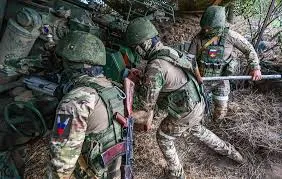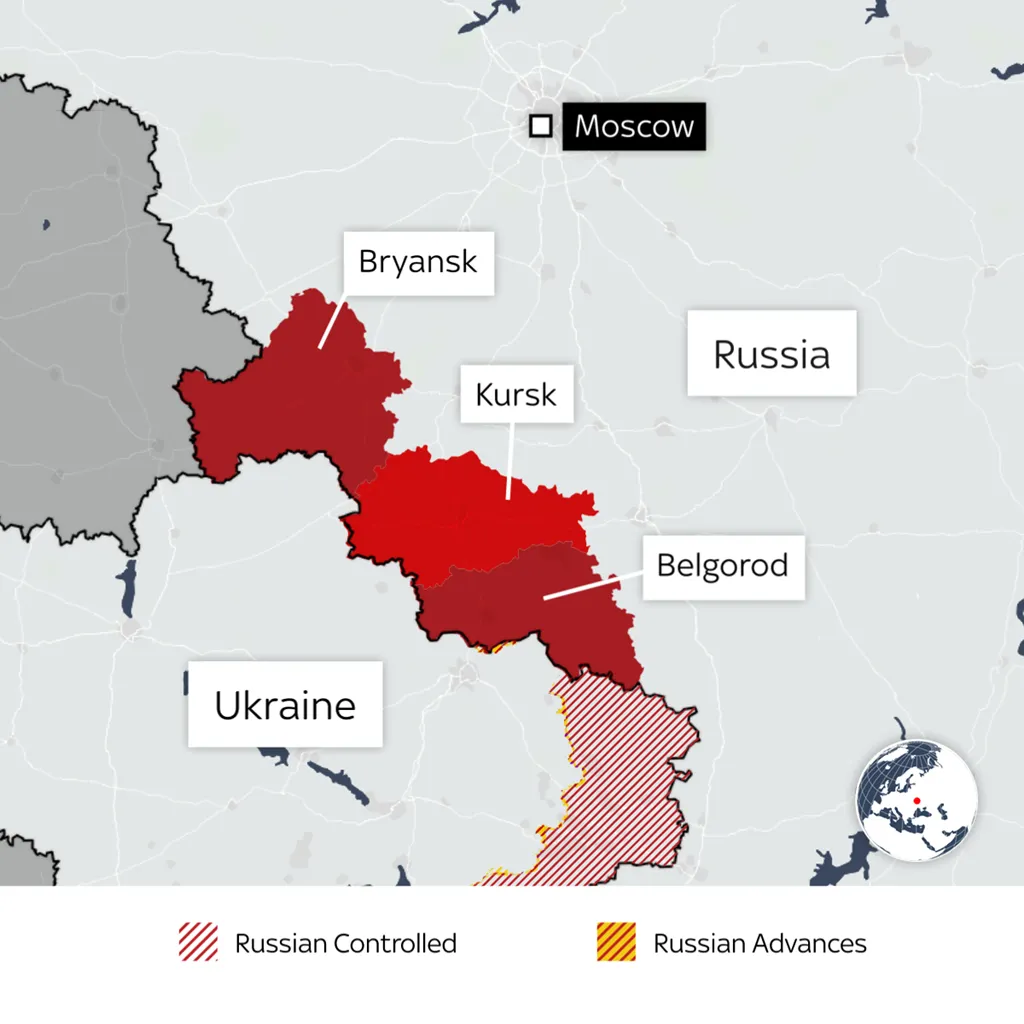
Russia applies special security mechanisms in three regions bordering Ukraine
Russia has announced the implementation of “anti-terrorism” measures in the border regions of Kursk, Bryansk, and Belgorod. These areas, adjacent to Ukraine, are now under heightened security following unprecedented actions by Kiev aimed at destabilizing the situation.
ensions at the Border: The National Anti-Terrorism Committee of Russia declared the measures in response to an attack on Kursk by Ukrainian armed forces, which resulted in civilian casualties and significant damage to homes and infrastructure. The special security protocols are designed to safeguard citizens and prevent further threats across these regions, which collectively span nearly 92,000 square kilometers.

Image of people evacuating.
The anti-terrorism regime grants Russian security forces the authority to implement several strict controls, including: Establishing checkpoints and restricting access to certain areas, requisitioning vehicles, monitoring and controlling communications, enhancing security at critical infrastructure sites, halting the production of hazardous goods, limiting certain civil liberties.
Thousands of civilians have already been evacuated from the Kursk region as part of these precautions.
On August 8th, Russia declared a federal state of emergency in the Kursk province in response to Ukraine’s five-day-long offensive. Russian Chief of General Staff Valery Gerasimov reported that around 1,000 Ukrainian troops launched an attack on Kursk starting on August 6th. The Russian Ministry of Health confirmed at least five civilian deaths and dozens of injuries as a result of the conflict.
Despite Russian forces managing to halt Ukraine’s advance, they have not yet succeeded in pushing the Ukrainian military back across the border. “The enemy has been stopped, but that doesn’t mean the situation is under control. Intense fighting is ongoing,” said Andrei Gurulyov, a lawmaker from Russia’s ruling party. Russian military bloggers indicated that the situation in Kursk had “stabilized” after Moscow sent reinforcements, including tanks, rocket launchers, and air units, on August 9th.
Ukraine’s actions may be aimed at gaining leverage in potential ceasefire negotiations that could take place after the U.S. presidential election in November. Russian President Vladimir Putin has condemned these moves as “provocative.”
While Ukrainian officials have not directly commented on the incursion, Ukrainian media has circulated videos showing soldiers allegedly controlling a Gazprom gas measurement facility in Sudzha, where Russian natural gas flows into pipelines crossing Ukraine to Europe. The footage claims that Ukrainian forces “have taken control of the town” and describe it as “deserted.”

Vitaly Slashchev, the leader of Sudzha, refuted these claims on August 10th, denying that Ukrainian forces had taken over the town or the Gazprom facility. Some sources suggest that Ukrainian troops are advancing toward the Kursk nuclear power plant, which provides much of southern Russia’s electricity. The plant has six reactors—two of which are inactive, two under construction, and two operational.
Kursk’s Acting Governor Alexei Smirnov reported that drone debris had fallen on a substation near Kurchatov, the town housing the Kursk nuclear power plant. While the plant itself was not directly attacked and remains operational, the United Nations’ International Atomic Energy Agency (IAEA) has expressed concerns about the risks posed by military activities in the area and has urged restraint.



